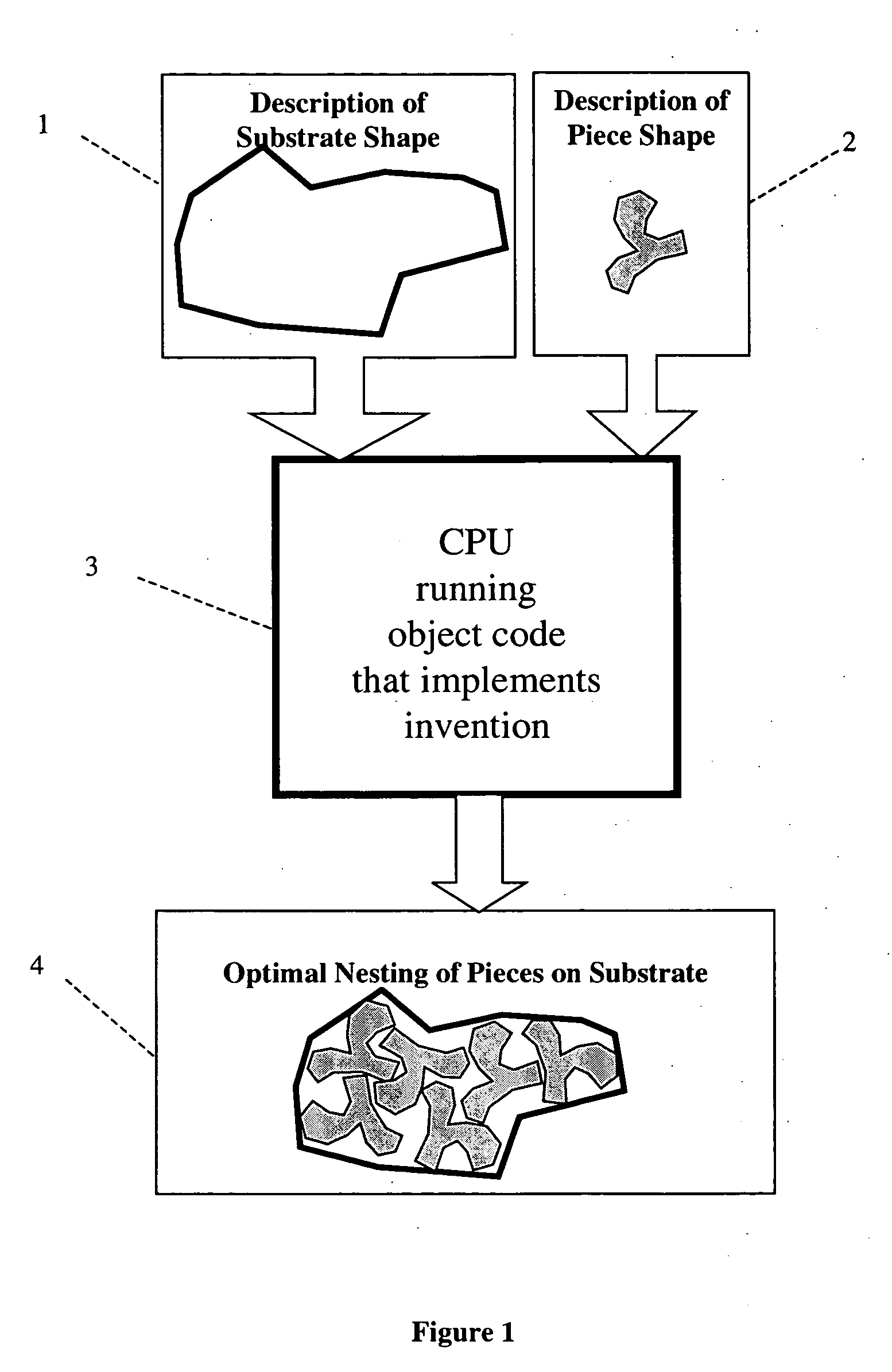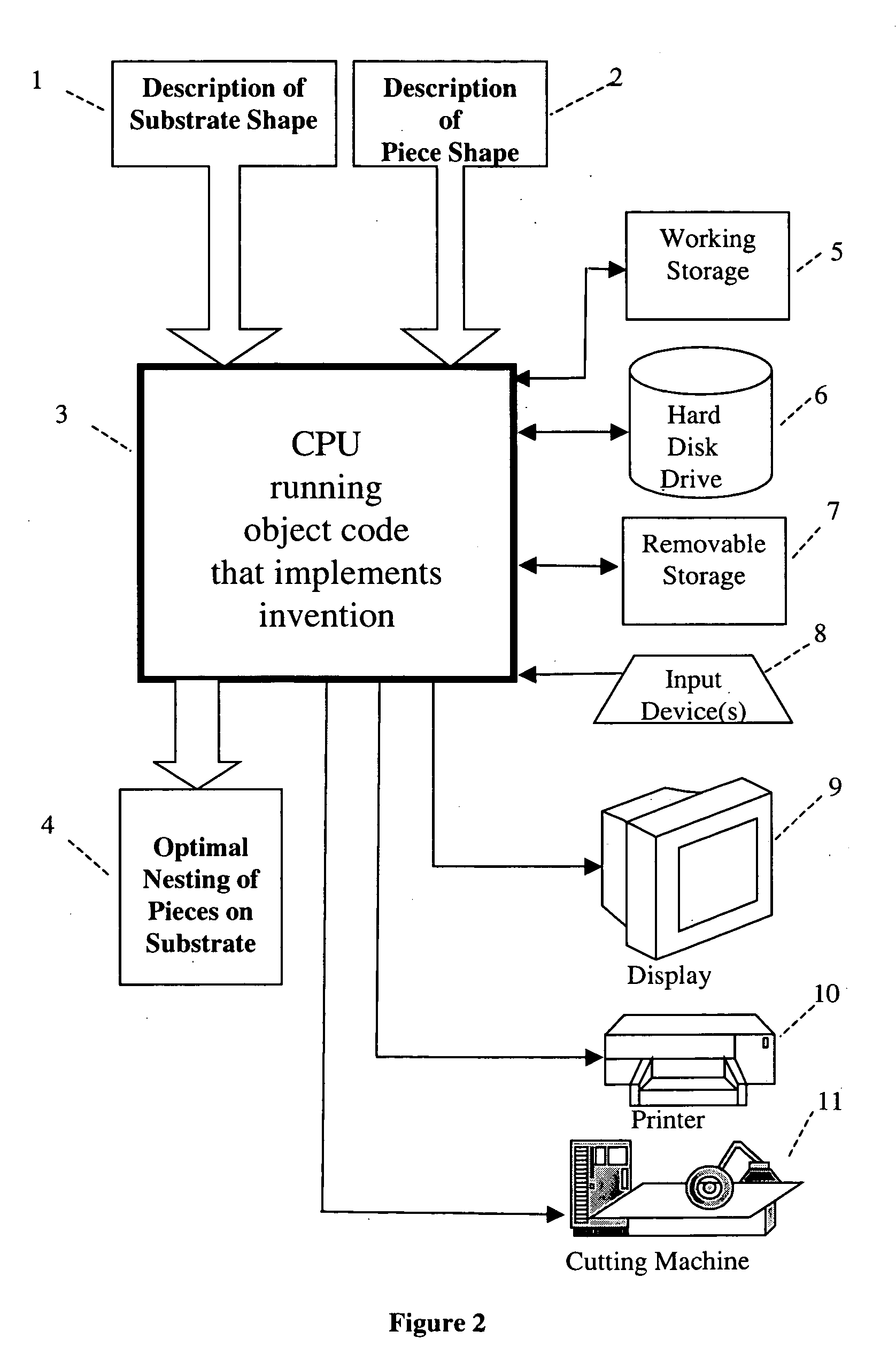System and method to solve shape nesting problems
a system and method technology, applied in the field of system and method to solve shape nesting problems, can solve the problems of difficult and complex design of effective “discovery operators, long and complex chromosomes,
- Summary
- Abstract
- Description
- Claims
- Application Information
AI Technical Summary
Problems solved by technology
Method used
Image
Examples
example of processing
[0180]FIGS. 15, 16, and 17 demonstrate the processing of the invention by showing actual results from a run on an implementation of the invention on a single two dimensional shape nesting problem. FIG. 15 plots all 1000 random members of the initial population in the lower part of the figure. The substrate cannot be seen because all members of the current population are shown. But when the threshold for plotting is raised by one, such that only species with species count of two or more (upper part of FIG. 15) are shown, then no species qualify and the substrate can be seen.
[0181]FIG. 16 shows that after 209 generations, the population has evolved so that there is a fairly good solution represented by species with at least 36 copies (see FIG. 16 upper). Lowering the species_count threshold in the lower part of FIG. 16, it can be seen that discovery operators are still at work, producing new individuals. Many of the newly created individuals have a great deal of overlap with other sp...
PUM
 Login to View More
Login to View More Abstract
Description
Claims
Application Information
 Login to View More
Login to View More - R&D
- Intellectual Property
- Life Sciences
- Materials
- Tech Scout
- Unparalleled Data Quality
- Higher Quality Content
- 60% Fewer Hallucinations
Browse by: Latest US Patents, China's latest patents, Technical Efficacy Thesaurus, Application Domain, Technology Topic, Popular Technical Reports.
© 2025 PatSnap. All rights reserved.Legal|Privacy policy|Modern Slavery Act Transparency Statement|Sitemap|About US| Contact US: help@patsnap.com



